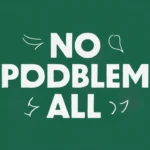When composing a business or professional email, the phrase “by way of introduction” may sound formal or overused. Instead, consider alternative expressions that add a personal touch and make your email more engaging. Using varied language helps create a natural flow while maintaining professionalism. Other Ways to Say “By Way of Introduction”.
A good introduction should establish context, highlight the purpose of the email, and create a smooth transition into the message’s main content. Whether you’re introducing yourself or someone else, choosing the right words ensures clarity and a positive first impression. Instead of sticking to one phrase, explore different ways to introduce yourself that suit the tone and purpose of your email.
By adjusting your wording, you can create a stronger connection with your reader. Let’s explore 15 alternative ways to say “by way of introduction” in an email and how to use them effectively.
Introducing Myself in a Natural Way
When sending an email to a new contact, a natural and engaging introduction is key. Instead of saying “by way of introduction,” you can simply start with “I’d like to take a moment to introduce myself.” This keeps things conversational while maintaining professionalism.
Another alternative is “Let me quickly introduce myself.” This phrase is direct and ensures the recipient understands the purpose of your email without unnecessary complexity. If you prefer a more polished approach, try “I’m reaching out to introduce myself and share some background on my role.” This sets the stage for further details while keeping the email fluid.
Your introduction should be warm, brief, and informative. Depending on your audience, you may want to personalize the greeting or mention a mutual connection to make the introduction more engaging. Ultimately, the goal is to set a positive tone and encourage further communication.
Read More: Synonyms for “I’m Down”
Introducing Someone Else in an Email
If you’re introducing a colleague, client, or partner via email, clarity and warmth are essential. Instead of “by way of introduction,” try “I’d like to introduce [Name], who [role or relevance].” This structure immediately provides context while keeping things professional.
Another effective alternative is “I want to take a moment to introduce [Name].” This keeps the introduction simple and direct while ensuring the recipient understands why they’re being introduced. If you prefer a more polished version, use “Please allow me to introduce [Name], who brings [expertise or value].”
To make the introduction more engaging, you can also add a brief reason for the introduction. For example, “I believe you two would benefit from connecting due to [reason].” This approach makes the introduction purposeful and increases the likelihood of a meaningful conversation.
Using a Warm and Friendly Tone
A warm, conversational tone makes introductions feel natural and inviting. Instead of saying “by way of introduction,” you can use “I just wanted to reach out and introduce myself.” This phrase makes your email feel more personal and less rigid.
Another option is “I hope you don’t mind me reaching out—I wanted to introduce myself.” This adds a touch of politeness while keeping the message clear. If you want a friendly yet professional approach, try “I’d love to take a moment to introduce myself and share how we might collaborate.”
A warm tone helps build rapport and encourages engagement. When crafting your introduction, consider the recipient’s communication style and adjust accordingly. The goal is to make a positive first impression that feels both professional and approachable.
Polished Business Introductions
For a more formal setting, a polished introduction is ideal. Instead of “by way of introduction,” try “Allow me to formally introduce myself.” This phrase adds a level of professionalism without being too rigid.
Another refined option is “I’m pleased to introduce myself and share a bit about my background.” This wording is suitable for corporate emails or high-level introductions. If you prefer a straightforward yet polished tone, use “I wanted to take this opportunity to introduce myself and my role.”
Professionalism is key when making first impressions in business communications. Choosing the right words ensures clarity while maintaining a respectful and professional tone. Tailor your introduction based on the industry and recipient to create a meaningful and effective message.
A Simple and Direct Introduction
If you prefer a straightforward approach, you can use clear and concise language that gets right to the point. Instead of “by way of introduction,” consider phrases like “I’d like to take a moment to introduce myself.” This keeps things professional without sounding overly rigid.
Another effective option is “I wanted to reach out and introduce myself.” This phrase adds a sense of purpose to your email while maintaining a warm and friendly tone. If you’re introducing a colleague, a simple “Please allow me to introduce [Name]” works well in formal and business settings.
When crafting a direct introduction, avoid unnecessary filler words and keep your message focused. A clear, professional introduction ensures that your recipient immediately understands who you are and why you’re reaching out.
A Friendly and Engaging Introduction
When introducing yourself in a networking or informal setting, a warm and conversational approach can make your email more inviting. Instead of using “by way of introduction,” try “I just wanted to take a moment to introduce myself.” This phrase feels natural and friendly.
Another alternative is “I hope you’re doing well! I wanted to quickly introduce myself.” This small personal touch can make your email feel more engaging while keeping things professional. If you’re introducing someone else, you could say, “I’d love to introduce you to [Name]—I think you’ll enjoy connecting.”
Using a friendly tone helps to build rapport and encourages the recipient to respond. Whether you’re introducing yourself or making a connection, a warm introduction creates a positive first impression.
A Professional Business Introduction
For business emails, it’s important to strike the right balance between professionalism and clarity. Instead of “by way of introduction,” a polished alternative is “I’m pleased to introduce myself as [your role].” This phrase immediately provides context and maintains professionalism.
Another great option is “I wanted to take this opportunity to introduce myself and share a little about my work.” This approach works well for corporate settings and networking emails. If you’re introducing someone else, try “I’d like to formally introduce you to [Name], who specializes in [area of expertise].”
A professional introduction should be clear, courteous, and relevant. Tailoring your wording to suit the recipient’s expectations ensures a successful and impactful introduction.
Introducing Yourself with a Personal Touch
Adding a personal touch to your email introduction can make it more engaging and memorable. Instead of the standard “by way of introduction,” consider saying “I wanted to personally introduce myself and say hello.” This phrase adds warmth while maintaining professionalism.
Another option is “I thought it would be great to connect and introduce myself.” This approach is particularly effective for networking emails, as it emphasizes the mutual benefit of the introduction. If you’re introducing a colleague or contact, you might say, “I’m excited to introduce you to [Name]—I know you’ll have a lot in common!”
Personalizing your introduction based on the recipient’s interests or background can make your email more engaging. A thoughtful approach increases the chances of a positive response.
Formal and Polished Introduction Options
When writing an email in a highly professional or corporate setting, it’s important to use polished and refined language. Instead of “by way of introduction,” a formal alternative is “Allow me to introduce myself formally as [your role].”
Another refined option is “I’m reaching out to introduce myself and share my background in [industry].” This phrasing ensures clarity and professionalism. If you’re introducing someone else, you can use “Please allow me to introduce [Name], who brings extensive expertise in [field].”
Using a refined tone ensures your introduction is well-received in formal settings. These alternatives work well for high-level business communications, corporate networking, and professional partnerships.
Creative Ways to Introduce Yourself in an Email
If you want your introduction to stand out, consider using a creative or unique approach. Instead of saying “by way of introduction,” try “I wanted to take a moment to introduce myself and share how I can support your work.” This approach immediately establishes a value-driven connection.
Another option is “I’m excited to introduce myself and explore ways we can collaborate.” This phrase works well for business development and networking emails. If you’re introducing someone else, you could say, “I’m thrilled to introduce you to [Name]—I think you’ll find their expertise invaluable.”
A creative introduction helps capture attention and encourages engagement. By tailoring your wording to the context, you can make your email more memorable and effective.
Making a Strong First Impression in an Email
Starting an email with “by way of introduction” can feel overly formal or outdated. When introducing yourself or someone else, using fresh, engaging language makes your email more inviting and effective. The way you introduce yourself sets the tone for the rest of the conversation, so choosing the right words is important.
A good introduction should be clear, professional, and aligned with the email’s purpose. Whether you are writing a business email, networking, or reaching out for collaboration, a well-crafted introduction increases the chances of a positive response. Using alternative phrases that sound natural and engaging will help create a lasting impression.
In this article, we’ll explore eight more effective alternatives to “by way of introduction” that you can use in your emails. Each option offers a unique approach, ensuring you find the perfect phrase for any professional or casual setting.
A Straightforward Approach for Clarity
A clear and direct introduction ensures your email is easy to understand. Instead of using “by way of introduction,” you can say, “I wanted to introduce myself and share a little about my background.” This phrase immediately provides context and keeps the conversation moving forward.
Another simple alternative is, “I’m reaching out to introduce myself.” This keeps your email to the point while maintaining a professional tone. If you are introducing someone else, you can say, “I’d like to introduce you to [Name], who specializes in [area of expertise].”
A straightforward approach is ideal for busy professionals who appreciate concise and efficient communication. Keeping your introduction clear and relevant makes it easier for your recipient to understand the purpose of your email.
A Warm and Personable Introduction
If you want to add a touch of warmth to your email, consider a more conversational approach. Instead of saying “by way of introduction,” you can write, “I wanted to personally introduce myself and say hello.” This phrase adds a friendly tone while maintaining professionalism.
Another option is, “I hope you’re having a great day! I just wanted to take a moment to introduce myself.” This greeting makes your email feel less robotic and more engaging. If you’re introducing someone else, you might say, “I’m excited to introduce you to [Name]—I think you’ll really enjoy working together.”
A warm and personable introduction helps build rapport and creates a more inviting interaction. This approach is particularly effective for networking emails and new business relationships.
A Professional and Polished Introduction
In formal business settings, using a refined and professional introduction is important. Instead of saying “by way of introduction,” try, “Please allow me to introduce myself as [your role].” This phrasing is polished and appropriate for corporate communications.
Another professional alternative is, “I’m pleased to introduce myself and share my background in [industry].” If you are introducing a colleague, a strong option is, “It is my pleasure to introduce you to [Name], who brings extensive expertise in [field].”
Professional introductions should be respectful, clear, and to the point. Using polished language ensures that your email is well-received, especially when addressing high-level executives or potential clients.
A Networking-Friendly Introduction
When reaching out to make professional connections, a thoughtful introduction can make a difference. Instead of “by way of introduction,” try, “I’d love to take a moment to introduce myself and explore how we might collaborate.” This phrasing immediately creates a sense of opportunity.
Another effective alternative is, “I thought it would be great to connect and introduce myself.” If you’re introducing someone else, you can say, “I wanted to introduce you to [Name]—I believe you’ll find great value in connecting.”
Networking is all about making meaningful connections. A well-crafted introduction that highlights mutual benefits encourages engagement and fosters stronger professional relationships.
A Value-Driven Introduction
Adding value to your introduction can make your email more compelling. Instead of simply stating who you are, try an approach that emphasizes how you can help. Instead of “by way of introduction,” use, “I wanted to introduce myself and share how I can support your goals.”
Another alternative is, “I’m reaching out to introduce myself and discuss how we might work together.” If you’re introducing a colleague, a strong option is, “I’d like to introduce you to [Name], who has a wealth of experience in [field] and could be a great resource for you.”
By positioning your introduction around value, you increase the likelihood of engagement. This approach is particularly useful in sales, consulting, or partnership-building emails.
A Soft and Polite Introduction
For situations where a gentle approach is best, consider using softer language. Instead of “by way of introduction,” you might say, “If I may, I’d love to introduce myself and share a bit about my work.” This phrase adds politeness and professionalism.
Another alternative is, “I wanted to take a moment to introduce myself, if you don’t mind.” If you are introducing a colleague, you can write, “I hope you don’t mind me introducing you to [Name]—I believe you’ll find their insights valuable.”
A soft introduction is ideal when reaching out to someone new, especially in industries that prioritize courtesy and relationship-building.
A Creative and Engaging Introduction
If you want your introduction to stand out, consider a creative approach. Instead of saying “by way of introduction,” try, “Let me quickly introduce myself before we dive in.” This phrase feels natural and engaging.
Another creative alternative is, “Before we get into the details, I’d love to introduce myself.” If you’re introducing a colleague, you can say, “Meet [Name]! I think you’ll enjoy learning about their work in [industry].”
Using a creative and engaging introduction can make your email more memorable. This approach works well for informal business emails, creative industries, and networking events.
A Concise and Impactful Introduction
Sometimes, less is more. Instead of using lengthy introductions, keep it short and impactful. Rather than “by way of introduction,” say, “I wanted to introduce myself—looking forward to connecting.” This keeps the email brief while still maintaining professionalism.
Another short yet effective alternative is, “I’d like to quickly introduce myself and my role.” If you’re introducing someone else, you might write, “I’d like to introduce [Name]—I think you’ll have a great conversation.”
Concise introductions are ideal for busy professionals who appreciate efficiency. Keeping it short and direct ensures that your email gets read without overwhelming the recipient.
Conclusion
Choosing the right introduction in an email can significantly impact how your message is received. Instead of relying on the overused phrase “by way of introduction,” use alternatives that better suit your tone, audience, and purpose.
Whether you’re aiming for a professional, friendly, or creative introduction, selecting the right words ensures clarity and engagement. A well-crafted introduction not only sets a positive tone but also encourages a meaningful conversation.
By exploring different ways to introduce yourself or a colleague, you can make a stronger impression and build better professional relationships.










